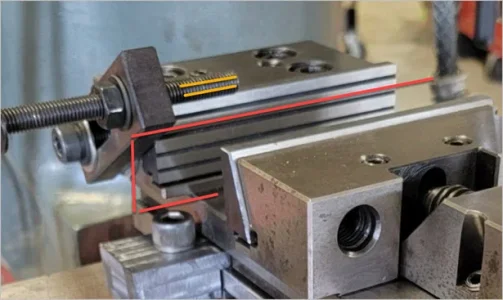I just adjusted my GS jaws per the manual and tried to clamp a block of steel on top of parallels. There is no way in H*** that you are moving those parallels after the Jaws are tightened.
Just for S***s and Giggles, I tried the same block with the same parallels on my 3 other vises (A big Grizzly and two high quality machinists vises). The parallels on all three were easily removed after clamping.
The GS system definitely works. While it is difficult to move the blocks against the springs, it is possible and the movement is just barely detectable.
I ordered new jaws for the GS ($100 each!!!) earlier this morning. I'll see if I can grind the old ones or get them ground by someone else so I can use them as spares - or perhaps make them my working jaws and use the new ones when I need the precision.
I'll also have to see if I can make some triangular jaws for it for working on round parts.
Btw, the Jaws on the GS have threaded holes all over the place for attaching fixtures, stops, and whatnot.
Just for S***s and Giggles, I tried the same block with the same parallels on my 3 other vises (A big Grizzly and two high quality machinists vises). The parallels on all three were easily removed after clamping.
The GS system definitely works. While it is difficult to move the blocks against the springs, it is possible and the movement is just barely detectable.
I ordered new jaws for the GS ($100 each!!!) earlier this morning. I'll see if I can grind the old ones or get them ground by someone else so I can use them as spares - or perhaps make them my working jaws and use the new ones when I need the precision.
I'll also have to see if I can make some triangular jaws for it for working on round parts.
Btw, the Jaws on the GS have threaded holes all over the place for attaching fixtures, stops, and whatnot.
Last edited:

